When Bo Byrne accepted the position of chef de cuisine at Tiqa in Portland last October, he had never cooked Mediterranean food professionally.
Tiqa serves food from the pan-Mediterranean belt that includes more than a dozen countries. Byrne visited Ireland in college, but other than that he has not been outside of the United States. Before joining the staff at Tiqa – he’s now executive chef there – he’d never even made hummus “the right way.”
“For me to have an opportunity to come into a spot and basically be on Page 1 from the start was exciting and kind of scary all at once,” Byrne said.
Diners are used to hearing restaurant gossip about which chef is moving where, but occasionally some head-scratching news surfaces. Byrne jumps to Tiqa. Matt Ginn, former chef de cuisine preparing creative American fare at Five Fifty-Five, signs on for the chef gig at Portland’s Evo Kitchen & Bar, which focuses on eastern Mediterranean food. Frenchman Frederic Eliot, former chef at the French bistro Petite Jacqueline, plunges into the pseudo-exotic world of American tiki food, while awaiting development of his new French restaurant. And when Christopher Bettera buys New Orleans-style restaurant Po’ Boys & Pickles, as he did last year, although he’d certainly eaten Cajun/Creole food before, he’d never actually set foot in the Big Easy.
For the average person, the idea of taking over the kitchen at a restaurant specializing in an unfamiliar cuisine is like hopping into a Formula One race car when you’ve never driven anything but a Volkswagen Bug.
How do chefs make the transition from the comfortably familiar to the unknown?
“I was very intimidated at first,” Ginn said. “The first two books I bought (on Mediterranean food), I thought ‘Holy cow, what am I getting myself into?’ ”
Chefs say they take the leap to stretch themselves and to learn something new. Their strategies for tackling the challenge aren’t so different from anyone’s strategies learning new skills. For chefs, that includes reading, traveling and lots of experimentation in the kitchen.
“This seemed like a great opportunity to manage a kitchen and to force myself to learn new techniques, new ingredients, new flavor profiles,” Ginn said, “because it’s easy to fall into a state of complacency.”
Ginn spent 10 years focusing on French fine dining and tasting menus in Portland and Boston before switching to eastern Mediterranean food and small, mezze-style plates when Evo opened last June.
To prepare, Ginn bought lots of cookbooks and spent a few weeks helping then-executive chef Brandon Hicks test recipes. Ginn then stage-ed – kitchen speak for short apprenticeships – for a couple of days at Oleana in Boston, hoping to draw upon that restaurant’s model of serving up “big, bold flavors and unique spice combinations” while still using ingredients from New England farms.
He also spent time at Central Provisions in Portland and six or seven weeks at Tao in Brunswick, working for minimum wage so he could learn how to do small plates in an elegant setting.
Ginn said the intimidating aspects became much more approachable once he got his hands on the food. A successful dish, he said, all comes back to tasting the food and making sure it’s balanced – no matter which country it’s from.
His most difficult adjustment has been letting go of the way he had thought about elements on a plate – starch, protein, sauce, texture, acid – and learning to focus on dishes like cauliflower and tahini that leave fish or meat off the plate entirely.
“Not having those restrictions was an awesome thing, but it took me a while to think that way,” Ginn said.
EVEN MORE CHANGES
Bo Byrne has had his own set of adjustments to make. When he left David’s Opus 10 in October, he was not only leaving behind new American cuisine for Mediterranean, he was also exchanging small plates served in an 18-seat restaurant for a venue with more than 300 seats. He prepared for the transition by reading everything he could get his hands on, including “The Food of Morocco” by Paula Wolfert and anything by Yotam Ottolenghi.
“There’s a lot of different cuisines to pull from, which is really exciting,” he said. “There’s a lot of different stuff to learn, and a lot of similar ingredients shared. It’s how they use them that’s different.”
In the four months or so that he has been in the job, Byrne has learned how to substitute ingredients, when necessary, and create the Mediterranean-inspired dishes that do well with American diners. For Valentine’s Day, he took a soup called molokhia that’s made throughout much of North Africa and the Middle East and substituted watercress for the jews mallow it traditionally calls for, as that plant is hard to find in this country.
A sumac-roasted half-chicken is one of Tiqa’s most popular entrees, and Byrne now seasons the grass-fed beef tenderloin on his steak frites plate with Moroccan spice.
But not every dish has been as successful as his Sumac and Garlic-Marinated Duck Breast with Pomegranate and Orange Blossom Gastrique. Customers roundly rejected a lamb tartare.
“There’s several variations on how to do that, and spices to use, and ways to present it,” Byrne said. “You can even do it cooked. We’ll probably look back into that dish” in the spring.
Byrne’s boss, restaurant owner Deen Haleem, tentatively plans to take his senior management team, including Byrne, to Morocco and Jerusalem next winter to give them some first-hand knowledge of the cuisine.
Why would a restaurant owner hire someone who is not already familiar with the cuisine? Haleem said they interviewed at least 150 chefs for the job. The challenge they faced was it was far more than a single cuisine.
“You can find someone who definitely knows Middle Eastern cooking, definitely knows France and Italy and maybe even Spain and Portugal, and five people that might know Moroccan cooking,” he said. “But finding someone who knows it all was almost going to be impossible. What we were hoping for was someone who had the talent and the experience and the desire to learn all of those cuisines.”
UP FOR ALLIGATOR?
Not all culinary leaps occur in fine dining. Christopher Bettera, the new owner of Po’ Boys & Pickles, took his first trip to New Orleans in January, walking from restaurant to restaurant and sampling as much food as he possibly could.
“I tried everything from crawfish to an alligator-and-shrimp cheesecake,” he said.
Since he returned to Portland, Bettera has added Cajun meat pies and an alligator special to the menu, and he hopes to have pralines soon.
Frederic Eliot is working as sous chef at Rhum until he opens his own restaurant. In addition to preparing a huge number of pu pu platters, he says he is learning a lot from chefs Frank Anderson and Rebecca Ambrosi, who have opened his eyes to new approaches.
The kitchen at Rhum is a much faster, prep-intensive environment than he is used to. There’s no need to make stocks. The sauces are spicier than those found in French cooking. And the salad made with raw shaved cabbage? “If you took a regular French person and said do you eat raw cabbage, they’d say ‘What are you, crazy?’ ” Eliot said.
Eliot says he’s used ingredients at Rhum he’s never touched before (such as the tofu skin used in the Loco Moco Inari), and he is discovering new combinations of flavors he might be able to use later in his own cooking.
“To me what’s really intriguing is to see those different styles of cooking that work just as well as yours,” he said. “Sometimes French chefs are a little more conservative and think that the technique they learned is the only technique, and the only technique that’s worth exploring.
“I’m enriching my mental library of flavors and techniques,” he said. “I think it’s great.”
Send questions/comments to the editors.


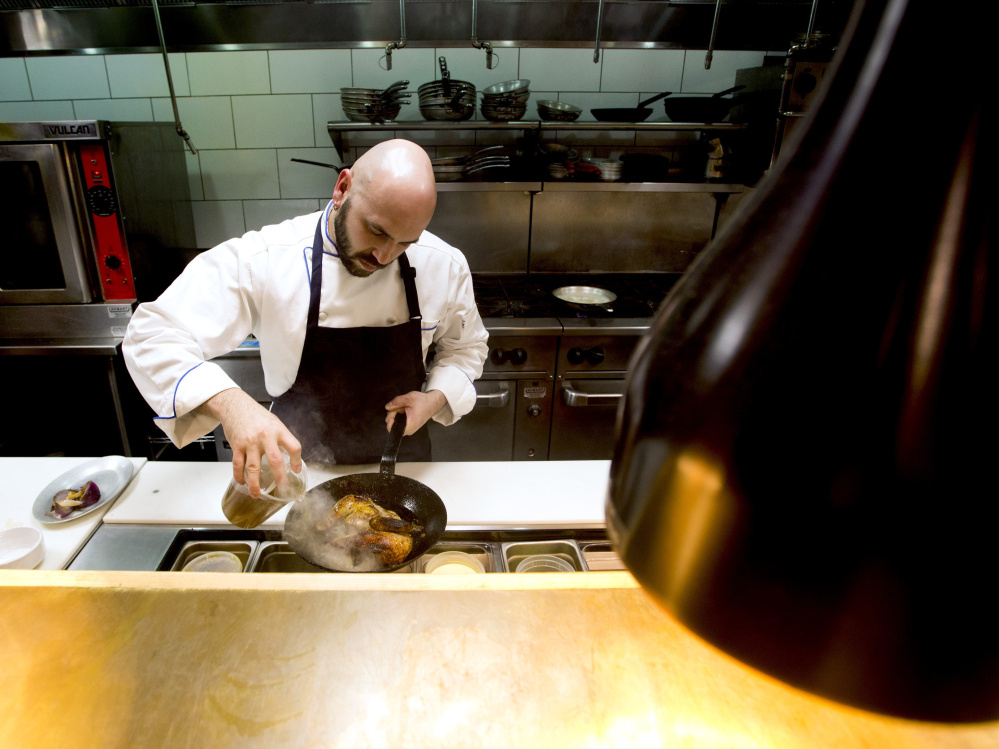
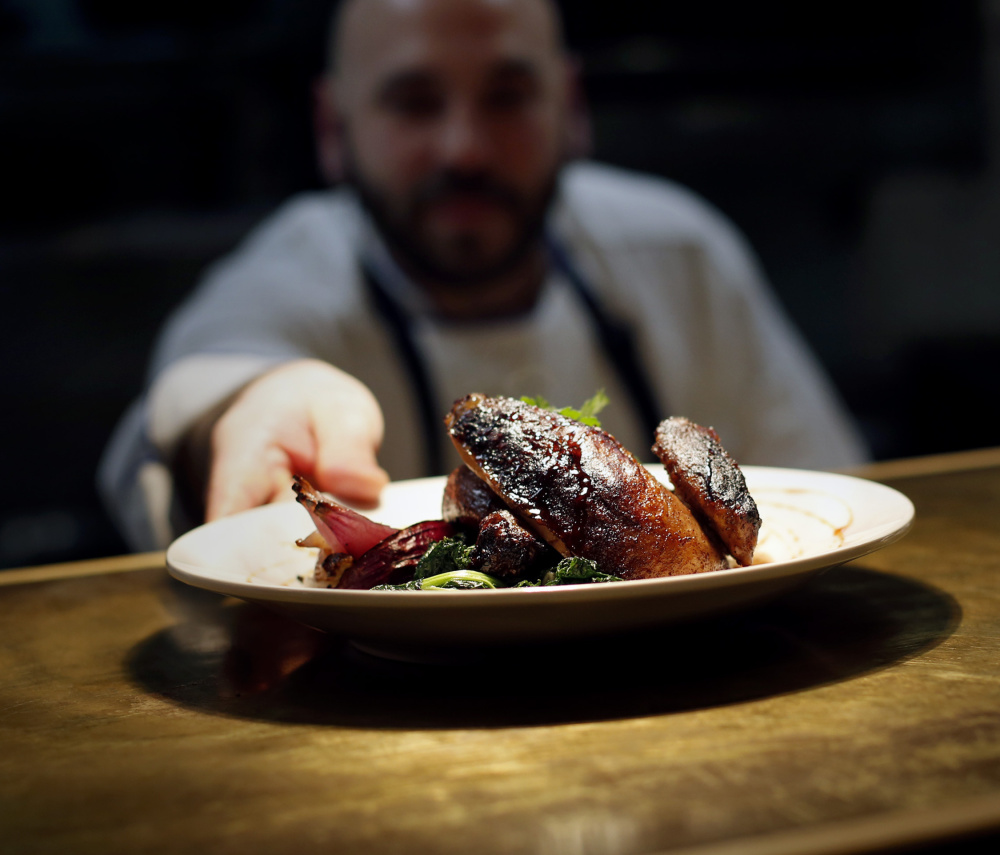
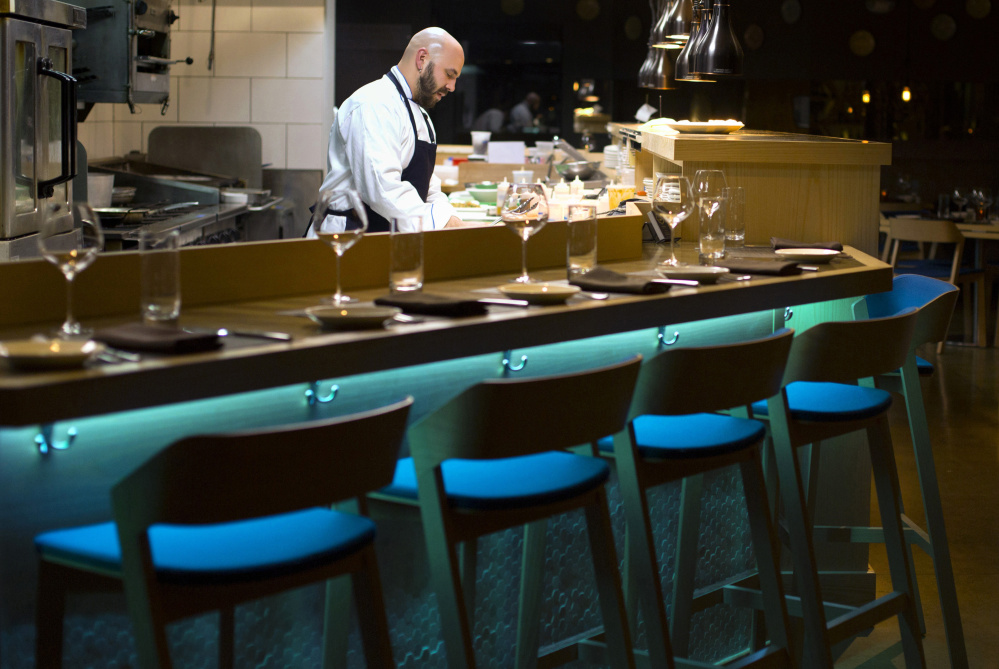
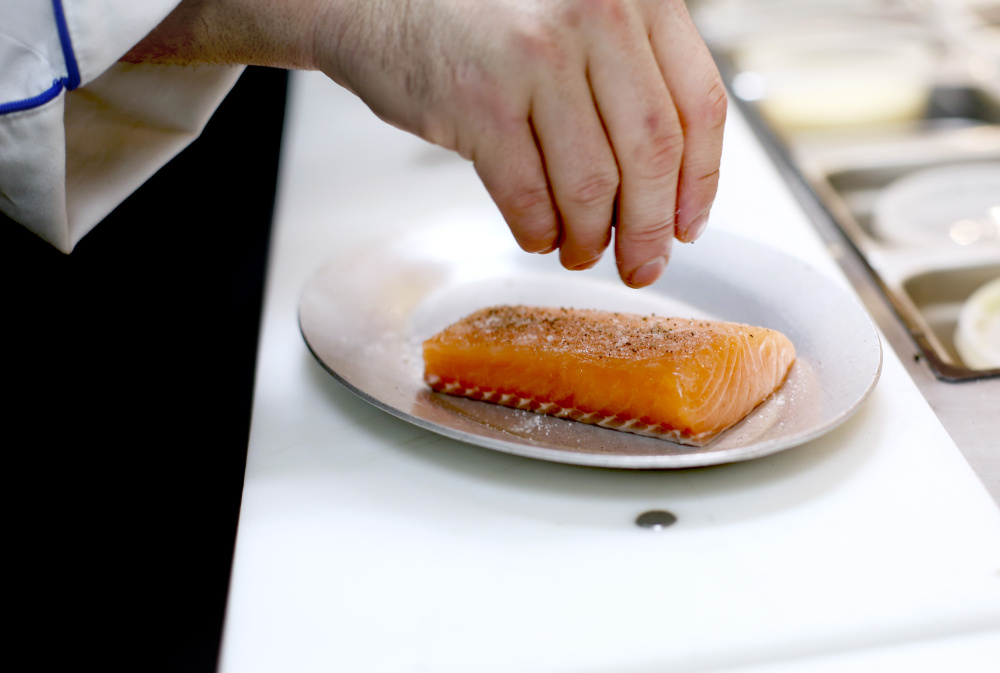
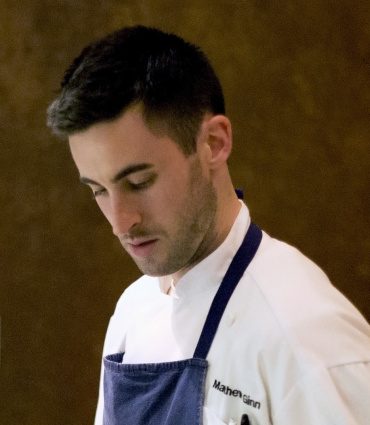
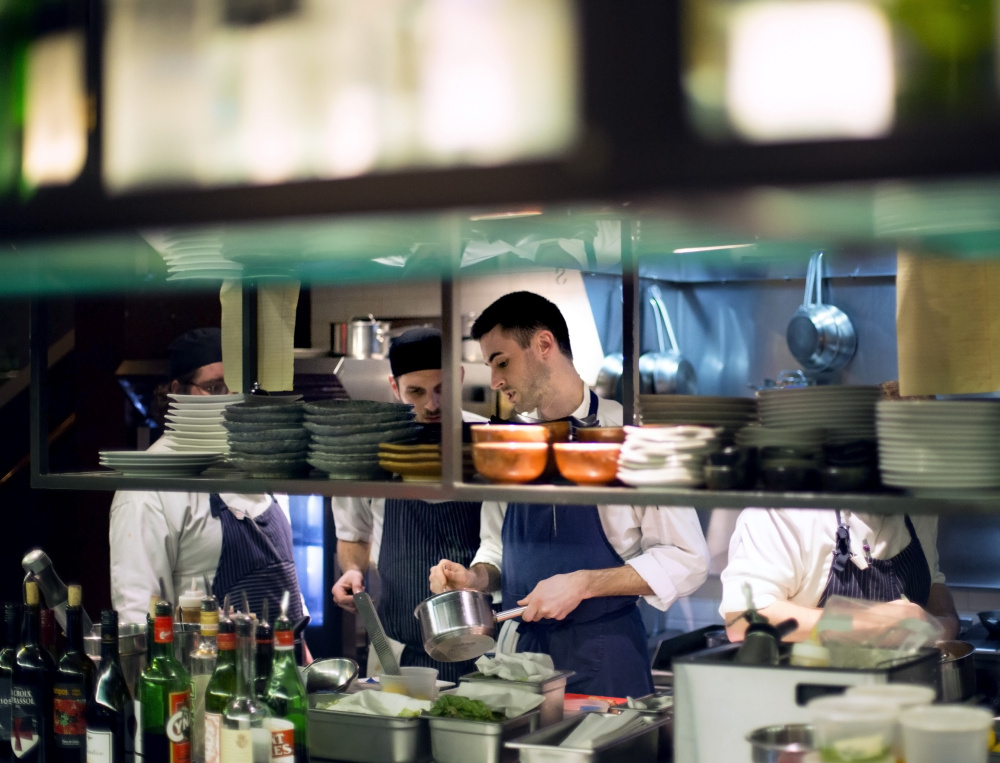
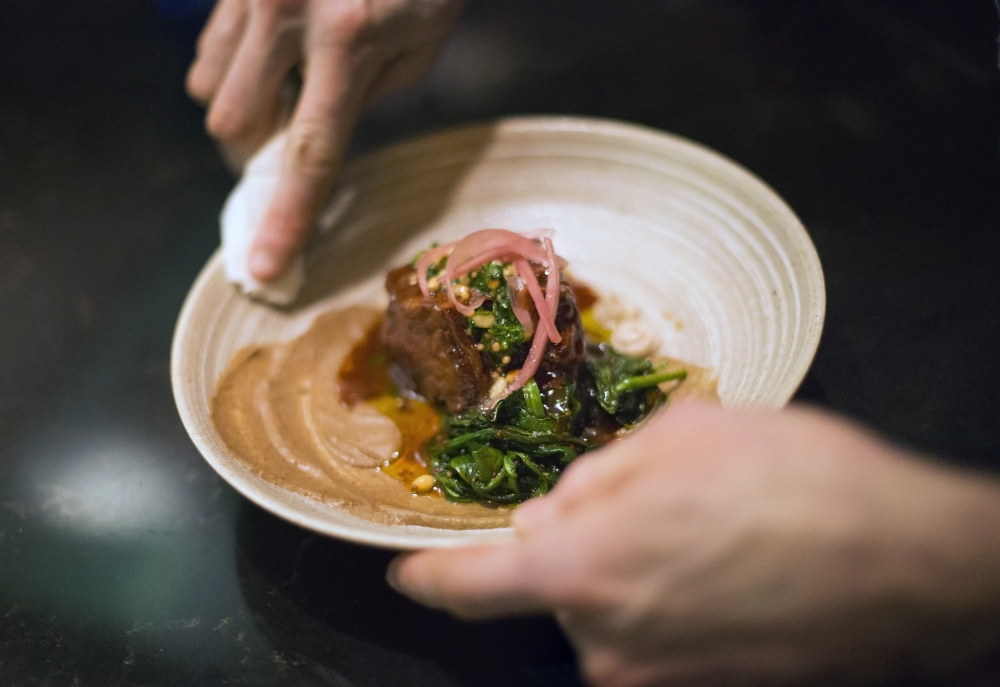

Success. Please wait for the page to reload. If the page does not reload within 5 seconds, please refresh the page.
Enter your email and password to access comments.
Hi, to comment on stories you must . This profile is in addition to your subscription and website login.
Already have a commenting profile? .
Invalid username/password.
Please check your email to confirm and complete your registration.
Only subscribers are eligible to post comments. Please subscribe or login first for digital access. Here’s why.
Use the form below to reset your password. When you've submitted your account email, we will send an email with a reset code.